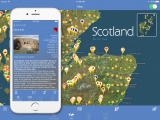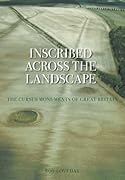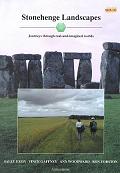<< Feature Articles >> Visiting Emilia Romagna for ancient history and fantastic food
Submitted by Andy B on Friday, 24 June 2016 Page Views: 3308
Multi-periodCountry: Italy Region: Emilia-RomagnaInternal Links:

Terramara di Montale
The Terramara were villages in the Emilia region of the river Po plains in about the second millennium BC. The settlements were characterised by surrounding fortifications of massive embankments and ditches with wooden palisades. They were often built on raised platforms in the marshy areas, with the aid of much piling.The Terramara di Montale was "rediscovered" in the second half of the 19th century, and excavations and investigations have been ongoing since. Remains of the ancient ditch and embankment can be seen, and there is an area where many of the excavation finds are displayed.
There is also an open air museum and part of a reconstructed village, which has displays of Terramara life, along with various experimental archaeology exhibits. More details on our Terramara di Montale page.
Veleia Romana
Veleia was discovered in 1747 thanks to the finding of Tabula Alimentaria Traianea, though most of its original structure has yet to be brought to light. The Tabula Alimentaria Traianea is a bronze sheet with a law engraved on it, mentioning a loan with low interest to all peasants who accepted to take care of children. After this find, excavations continued as archaeologists found the foundations of the forum and other buildings; 12 marble statues (among which Livia, emperor Augustus's wife) and many other small bronze statues, coins, medals, inscriptions, small tools and another bronze tabula with prescriptions to municipia in Gallia Cisalpina have been found. A spa (thermae) was also found.Parma National Archaeological Museum
The nearby town of Parma is home to Italy's National Archaeological Museum (Museo Archeologico Nazionale). The collections include finds from aforementioned Roman city of Veleja as well as a wider collection of Egyptian artefacts, Greek, Roman and Etruscan sculptures, ceramics, glassware and coins. There is also a pre and protohistoric sections and a gallery for Parma and the surrounding area in the Roman period.The region is also home to the far-reaching east-west Roman route of Via Emilia. The road began in 187 BC. Its construction consolidated of Roman power in Cisalpine Gaul and ended the difficult early phase of expansion into Northern Italy, dotted with conflicts with the Celtic tribes and by Hannibal's campaigns. Settlements flourished, giving Emilia-Romagna the settlement scheme it maintains today.
A region to taste
Parma is of course world-renowned for its ham. Other food from Emilia Romagna is equally well known for its gastronomic quality - balsamic vinegar of Modena (Aceto Balsamico di Modena) is an integral part of the local culinary tradition through the centuries and you can also find fantastic parmesan, "cappelletti", seasonings , and salami. As well as being a versatile and intriguing ingredient of countless regional recipes, the region's food is the main feature of many local festivals and events throughout the year.This post brought to you in association with ItaliaRegina.it
<< The truly amazing Megalithic Portal iPhone App is now available
Tom Bullock reports from his biggest prehistoric field-trip >>






 We would like to know more about this location. Please feel free to add a brief description and any relevant information in your own language.
We would like to know more about this location. Please feel free to add a brief description and any relevant information in your own language. Wir möchten mehr über diese Stätte erfahren. Bitte zögern Sie nicht, eine kurze Beschreibung und relevante Informationen in Deutsch hinzuzufügen.
Wir möchten mehr über diese Stätte erfahren. Bitte zögern Sie nicht, eine kurze Beschreibung und relevante Informationen in Deutsch hinzuzufügen. Nous aimerions en savoir encore un peu sur les lieux. S'il vous plaît n'hesitez pas à ajouter une courte description et tous les renseignements pertinents dans votre propre langue.
Nous aimerions en savoir encore un peu sur les lieux. S'il vous plaît n'hesitez pas à ajouter une courte description et tous les renseignements pertinents dans votre propre langue. Quisieramos informarnos un poco más de las lugares. No dude en añadir una breve descripción y otros datos relevantes en su propio idioma.
Quisieramos informarnos un poco más de las lugares. No dude en añadir una breve descripción y otros datos relevantes en su propio idioma.